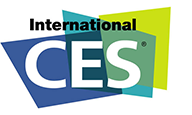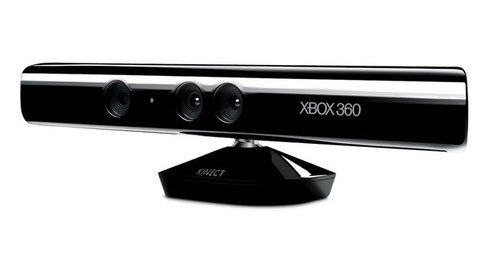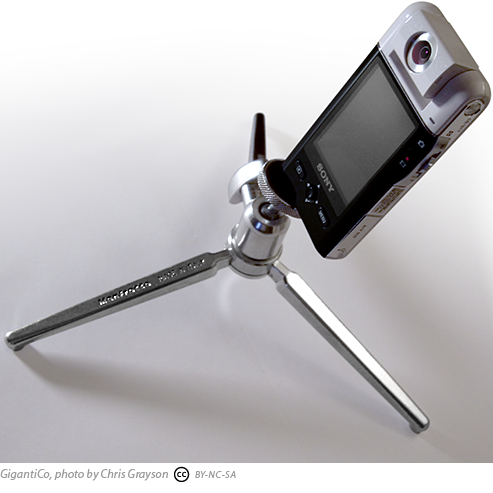CES 2011
 Friday, January 14, 2011 at 8:03PM
Friday, January 14, 2011 at 8:03PM  This past week at the Consumer Electronics Show in Las Vegas there was a great deal of fanfare surrounding 3D TVs, and tablets, tablets everywhere but none that you can actually buy. However, this focus on flat screen 3D and Android tablets overshadowed other innovations on display.
This past week at the Consumer Electronics Show in Las Vegas there was a great deal of fanfare surrounding 3D TVs, and tablets, tablets everywhere but none that you can actually buy. However, this focus on flat screen 3D and Android tablets overshadowed other innovations on display.
My favorite little show stealer was a manufacturer of modular robotic parts (and the software to run them) named RoboBuilder. They have both consumer grade and professional product lines for their modular parts. They are seeking a wholesale partner to bring their consumer product to the US market. Their little guy is very reminiscent of Plen, the Japanese “hobby” Robot famous for skateboarding and roller-skating. While the Japanese have a deep cultural connection and are generally recognized as the world leader in robotic toys, this Korean native just became my favorite new entry into the hobbyist robot market.
Also of note, eyewear made a strong showing at this years convention, particular in award recognition. For instance, Vuzix took honors in the CES Innovation Awards for their Raptyr 3D Augmented Reality glasses. Though I don’t have any video of them to share at this time, stay tuned, Vuzix will be our headlining guest at ARNY - Augmented Reality New York, in February.
Polaroid hit it out of the ballpark. The business arrangement between Lady Gaga and Polaroid was negotiated by Hollywood talent agency, William Morris Endeavor, and Polaroid’s PR Agency, Weber Shandwick. This has proven a stroke of brilliance. The rumors of Polaroid’s death have been greatly exagerated. After the rise of digital photography took their core automatic camera business down in flames, Polaroid has made various attempts at rebirth over the past decade, twice under new ownership and management (and twice filed for bankruptcy). In its current incarnation, PLR IP Holdings has created new value for the brand by developing their own stable of halo products, while leveraging their brand equity with licensing deals to other manufactures. It is a little known fact that Polaroid first made its name in polarized sunglasses (hence the name Polaroid). Their big move back into sunglasses and designer polarized-lens eyewear for 3D TV viewing was very smart; with a legitimate historical connection to the brand. Bringing in Lady Gaga to introduce the brand to a new generation — and giving her a contributing role in their product line beyond mere spokesperson — has been positively brilliant. Polaroid commanded serious mindshare at CES, and their Polarez GL20 Camera Glasses, to be sold under the Polaroid Grey Label and unveiled at CES by Lady Gaga herself, were a show stealer. I’m enthusiastic to see where Polaroid goes from here, they’re going to be an exciting brand to watch.
I would personally like to thank Jon Pollock for giving me a private viewing of the GL20 glasses, where I made the above video, as they were not on display to the public. I would also like to thank Colleen Sarenpa who was so helpful and informative. Thank you both, you’re doing a great job reviving a legendary brand.
If you find that Lady Gaga’s video glasses need some complimentary trousers to complete your cyborg wardrobe, you can go for Cyberdyne’s HAL exoskeleton. CES saw this Japanese firm’s first exhibit here in the states. Though the torso component (not shown in the video) enables the wearer to effortlessly lift many times their own weight, the legs are principally being marketed as a mobility option for the handicapped (I cobbled together my video from the glimpses I was able to snatch when Spike TV showed up. I was actually the only person there at Cyberdyne’s booth when Spike unexpectedly arrived. A crowd formed rather instantly. I’ve tried to find Spike’s coverage of this, but it appears they never published it to their website. Perhaps it ran on their cable station).
I must concede that my poor video does not do Arial Burton’s technology justice. The glass enclosure is not needed, but I believe it is a safety issue (don’t want to blind anyone with a laser). The device uses a focused laser in such a way that it naturally terminates in a “plasma spark” in midair. This plasma spark creates the “pixel” in the air. This will be an interesting technology to keep an eye on. They’ve more than tripled the resolution in the last year, and will likely do it again next year. They also tell me that they plan to launch a full color version “soon.”
Of the various video goggles on display at CES, the Recon goggles made for snow-sports were the most practical. Giving a heads-up view of important statistics while barreling downhill, they aim to introduce models catering to other goggle and helmet wearing sports over the course of the next year. Their execution is well thought out, their build quality in solid, and they are delivering on a genuine desire in the market for a quality device to deliver location based data while moving downhill. This information may all already be present in a user’s smartphone, but that is not a form factor with practical application in the context of a downhill run.


 In the 1980s, Bruce, along with William Gibson and Rudy Rucker, was one of the writers who created the Cyberpunk Science Fiction sub-genre. Though his stock has always remained high, his mainstream profile has been rising, as a futurist cultural commentator. As a contributing editor to
In the 1980s, Bruce, along with William Gibson and Rudy Rucker, was one of the writers who created the Cyberpunk Science Fiction sub-genre. Though his stock has always remained high, his mainstream profile has been rising, as a futurist cultural commentator. As a contributing editor to  Legendary game developer, in 1989 Will created
Legendary game developer, in 1989 Will created  Blaise founded software company
Blaise founded software company  Youthful diversions as a stand-up comic, and juggling circus clown groomed Jesse for his role as Creative Director for the Walt Disney Imagineering Virtual Reality Studio — seven years creating immersive visitor experiences for Walt Disney theme parks. In 2004 he left to start his own entertainment design firm,
Youthful diversions as a stand-up comic, and juggling circus clown groomed Jesse for his role as Creative Director for the Walt Disney Imagineering Virtual Reality Studio — seven years creating immersive visitor experiences for Walt Disney theme parks. In 2004 he left to start his own entertainment design firm, 





